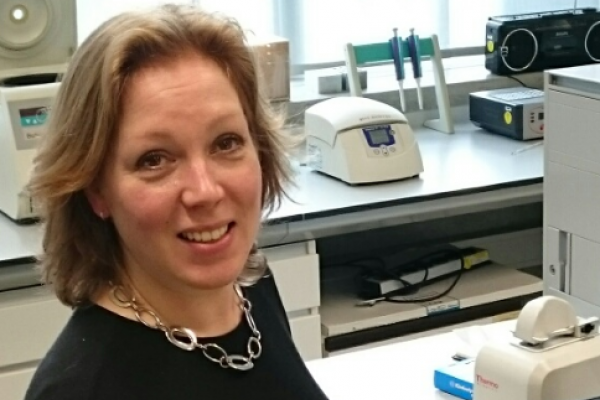3Rs Stimulus Fund: breast cancer research from the 3D printer
8 years agoThe effects of substances on breast tissue may soon be tested in 3D. That seems to go better than in a flat surface, because reality is also 3D. Majorie van Duursen, toxicologist at IRAS, received a subsidy from the 3R Stimulus Fund to conduct research on this together with colleagues. It can prevent the use of laboratory animals in follow-up research.
What do you aim to accomplish with this research?
We’re aiming to improve the research on the effects of substances on the development of breast cancer. Testing the safety of medicines and chemical substances still requires lots of animal experiments. It’s getting easier to replace the animal experiments with research in a dish with cultured cells, in this case breast cells. We were already working hard to get these “cell models” to better resemble reality, for example by combining cell types so that you get them to interact. However, breast cancer starts in the milk ducts, which you can simulate even better using 3D models. Our model can be part of reproduction studies or cancer research. These studies take time and are expensive, but with our models, you may be able to gather targeted information before you even start follow-up research with animals.
What do these printed shapes look like?
We’ve worked on two designs. One uses direct printing of cells in the cylindrical shape of a milk duct. The other is a mold with a gel containing breast cells. We make a channel that simulates a milk duct. One advantage of both methods is that you know exactly how many cells you’re putting together, so you can predict how they will develop and behave. Thus you have much more control than in an existing lump of tissue. That’s especially important with toxicity tests, because if you’re comparing two substances, you want the test models to be identical. Only then can you know that differences in effect are attributable to the different substances.
Can this approach be used in developing cancer medicines?
Absolutely. Developing medicines requires a lot of steps. With our models, you can demonstrate or rule out an effect early on in the chain of testing. That means that any animal experiments that are necessary can be more targeted, that is, using fewer animals, or those experiments might not even be necessary any more. So our research doesn’t let you replace animal experiments one on one, but you might have better safety assessment using fewer animals in the preclinical testing phase.
How did you end up doing this research?
I mainly work on hormone disruption: how substances affect the balance of hormones and what negative health effects this may have. I’m looking for ways to test these effects as appropriately as possible without using animals. When we wanted to go a step further with our cell models by making milk ducts in 3D, we asked the Biofabrication department of the UMC Utrecht for help. That’s how this relationship came about.
What is the role of the 3Rs Stimulus Fund?
We used the grant to develop prototypes with which we can go to companies and show them we can do this, and it works. It’s this validation step that is often difficult to finance. Companies put very little money into it, because it’s still in the developmental phase. It’s also not attractive for science, because you also have to test substances that do nothing, in order to know if your test doesn’t erroneously show an effect. These kinds of results are
difficult to get financed and published.
Are animals also needed for your research?
No. We use commercially available cell lines and human tissue from the clinic. We can obtain human breast tissue from breast-reduction operations, and sometimes we get dog tissue from operations for breast cancer. I can’t rule out the need for experimental animals for a given phase in the research line, but we try to avoid it as much as possible.
How far are you at the moment?
We have demonstrated that we can make both prototypes. One of them, the method with the mold, turns out to be the most practical. It’s the easiest to make and allows us to maintain long-term cultures[AH1]. The other method, printing the little cylinder, requires advanced equipment. We’re now testing substances using both prototypes. It looks promising – we’re seeing both tumour formation and metastasis.
You’re talking quite openly about this. Isn’t there some close competition?
I see sharing knowledge as my duty to society. We’re doing this research with public money, after all, so we should show the public how it’s being spent. It’s also important that others are able to use our methods, so we talk about them at conferences. That’s how you come into contact with other researchers who are working on more or less the same subject, so you can work together and exchange ideas. And that’s added value for society.


